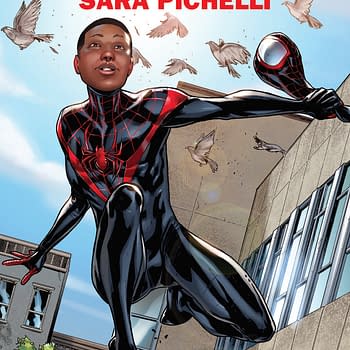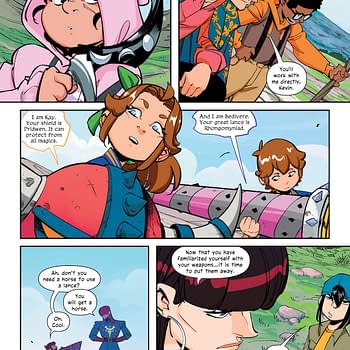Posted in: Comics, san diego comic con | Tagged: Douglas Wolk, Ed Piskor, Lora Innes, Matt Phelan, peter bagge, Sara Ryan
SDCC '15: Significance of Historical Comics and Graphic Novels – The Pros Talk Shop
By Michele Brittany, West Coast Correspondent
Douglas Wolk (Reading Comics) hosted the Historical Comics and Graphic Novels panel Thursday afternoon at San Diego Comic Con International. He was joined by writers and artists publishing historical oriented stories and biographies, which include Lora Innes (The Dreamer), Sara Ryan (Escape From Alcatraz), Matt Phelan (The Storm in the Barn), Ed Piskor (Hip-Hop Family Tree), and Peter Bagge (Woman Rebel: The Margaret Sanger Story).
Wolk asked the panelists their approach to research since many of them were writing about historical events that may not have photographs or complete documentation. Phelan stated that he starts with photographs for visual cues and asks himself what happened in the moments leading up to the photograph and the moments afterwards. For example, he used the dust bowls photographs as inspiration for his book. Piskor, who is writing on the hip-hop culture said he tries to capture the spirit of the movement, while Ryan distills information and then visits the locale, in this instance Alcatraz Island in San Francisco, to better understand the subject matter and fill in gaps that exist. Innes, who has written about the American Revolution, uses re-enactment photographs to assist in her research.
There will be gaps of information, especially when the historical event is further in the past than not. How does the writer/artist balance reality, fiction, and poetic license? Piskor said he uses narrative devices such as "As the legend goes…" or voiceover to signal where there is speculative assessment of an event. Phelan will use the dialogue from the person's own accounts to enrich his scenes. Ryan explained that she has toned down foul language and violence in her book, so it can be targeted to a general audience. Innes relates her stories are fiction and she makes targeted choices to condense timelines for the sake of the bigger story.
Wolk asked the panelists to share the challenges they face creating historical stories. Bagge said that he has to admire or have an interest in the person or subject that he is researching. Innes stated that while the primary source is crucial, she thinks that secondary sources are just as important since they may shed light on the main character that is not revealed from the character themselves. Piskor said it is challenging to work in subjects where the people are still alive: the stories from the primary sources will often contradict each other and he must sift out the real story. Bagge added he is potentially challenged by the intended publication's size and how to limit his story to fit the publication.
What kind of feedback has the panelists received with regards to their comics and books? Piskor stated most of the feedback he has gotten has been from historians, while Phelan said he has gotten favorable responses from Buster Keaton's remaining family for instance. Innes conveyed she has also gotten positive responses from the ancestors of her comics and has gotten additional information that she didn't have before. Ryan related she has gotten more responses from her fictional town in Bad Houses; she believes it resonates with more readers than her historical story about Alcatraz prisoners. Bagge has gotten critiques from Margaret Sanger's biographers.
The dialogue between the panelists closed with the significance of these stories. Innes stated she tries to write strong stories that inspire interest in the subject matter as a way to encourage readers to learn more about the event or subject. The other panelists confirmed agreement of how important historical comics and graphic novels are in educating readers about historical people and events that they might not otherwise learn about.
Event photos were taken by Michele Brittany.
Michele Brittany is an independent popular culture scholar and semi-professional photographer and editor of James Bond and Popular Culture: Essays on the Influence of the Fictional Superspy (McFarland & Company) as well as the forthcoming book Essays on Space Horror in Films, 1950s – 2000s. Read her reviews and analysis on the spy/espionage and space horror genres via her blogs at Spyfi & Superspies and Space Horror Films. Follow Michele on Twitter: @mcbrittany2014.















